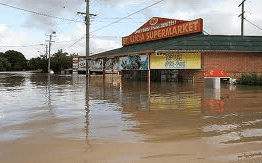Following on from the natural disasters that struck Queensland earlier this year, over 50 percent of businesses now plan to review their OHS and risk management policies.
According to a ComOps survey, 78 percent of organisations discovered gaps in their OHS policies after the disasters, making risk management strategy a greater priority
Results revealed that 78 per cent of organisations found gaps in their OHS policies following the disasters and as a result, risk management strategy is now a greater priority overall.
The survey also highlighted a number of the barriers OHS and risk managers face, with 32 percent indicating a legally compliant OHS strategy is not a high enough priority in their organisation and 29 percent saying they can’t afford the investment at the current time.
In addition, when it comes to deploying effective OHS strategies within businesses, 35 percent of managers say that they’re frustrated by the behaviour of their workforce colleagues in assisting with policy and procedure compliance, while 14 percent don’t believe they’re given adequate time to dedicate to the overall issue of safety.
“The survey suggests that the Queensland floods have been a wake-up call for a comprehensive review of OHS strategies, all the way from design and formulation through to incident reporting, risk mitigation and management,” ComOps Safety, Rick and Claims Manager Moshe Woods said.
“At the same time, the data would suggest that while the will is there to dedicate more resources to OHS, managers are still hindered by slack budget allocation and the perception that other business requirements have a greater priority.”
Moshe said he’s reassured by the finding that over one third of organisations are planning to deploy an OHS and risk management system, with 25 percent planning to do so within the next 12 months.
“This OHS policy overhaul should place Queensland in a better position at times of natural disaster in the future,” he added.

